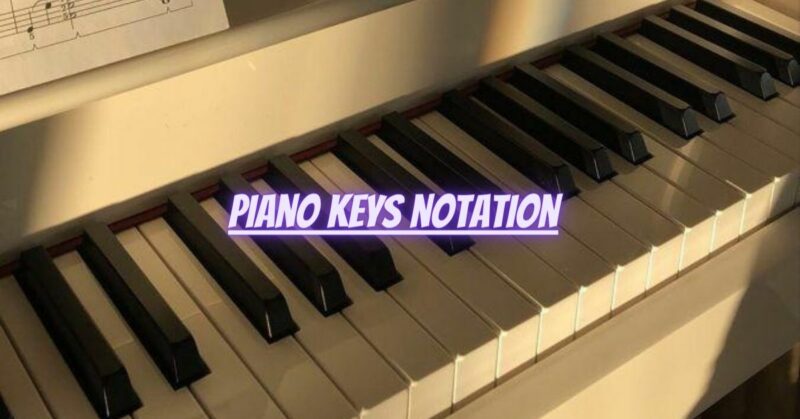Piano keys notation is the visual representation of music specifically designed for pianists. It is a musical language that allows pianists to read and interpret musical scores, unlocking the vast world of classical, contemporary, and original compositions. In this article, we will delve into the significance of piano keys notation, its structure, and how pianists use it to bring the magic of music to life.
1. Understanding Piano Keys Notation:
Piano keys notation is based on a system of staffs, clefs, notes, and other symbols that communicate the pitch, duration, and expression of musical sounds. The notation is written on a set of five horizontal lines called the staff, and each line and space on the staff corresponds to a specific pitch.
2. The Grand Staff:
The piano features two staves stacked on top of each other, forming the grand staff. The top staff uses the treble clef (also known as the G clef), which represents higher pitches played with the right hand. The bottom staff employs the bass clef (F clef), indicating lower pitches played with the left hand.
3. Note Names and Durations:
Piano keys notation uses letter names (A, B, C, D, E, F, G) to represent the pitches of the piano keys. Each note also has a specific duration denoted by different types of note symbols, such as quarter notes, half notes, and whole notes, indicating the length of time the note should be played.
4. Accidentals and Key Signatures:
Accidentals, such as sharps (#), flats (♭), and naturals (♮), modify the pitch of a note. They appear before the note on the staff and remain in effect for the entire measure unless canceled by another accidental or a natural sign.
Key signatures, located at the beginning of each staff, indicate the tonal center of a piece and represent a specific set of sharps or flats that apply throughout the composition.
5. Dynamics and Articulation:
Piano keys notation includes symbols for dynamics (loudness) and articulation (how the notes are played). Crescendos (getting louder) and diminuendos (getting softer) indicate changes in volume, while staccato dots, legato lines, and other markings denote how to play the notes with regard to touch and expression.
6. Reading and Interpreting Notation:
Pianists read notation from left to right, with each note and symbol having a precise meaning. Pianists rely on their knowledge of piano keys and their understanding of the notation system to interpret the music accurately and bring it to life with their unique musical expression.
Conclusion:
Piano keys notation is a fundamental aspect of music literacy for pianists, enabling them to communicate, interpret, and perform a vast repertoire of musical compositions. By understanding the structure of notation, the language of dynamics and articulation, and the significance of key signatures and accidentals, pianists can immerse themselves in the captivating world of music and share the magic of piano keys with audiences around the globe. Happy playing, and may the language of piano keys notation guide your musical journey with grace and brilliance!


